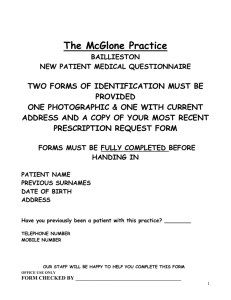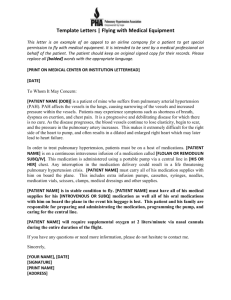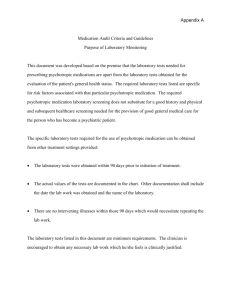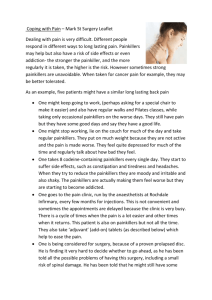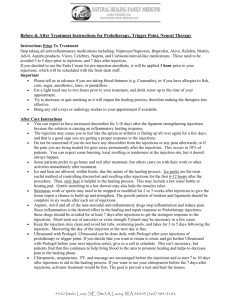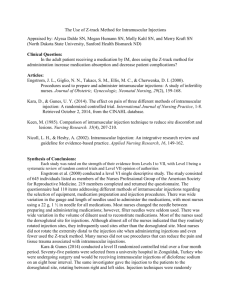Pain medication and injections.
advertisement
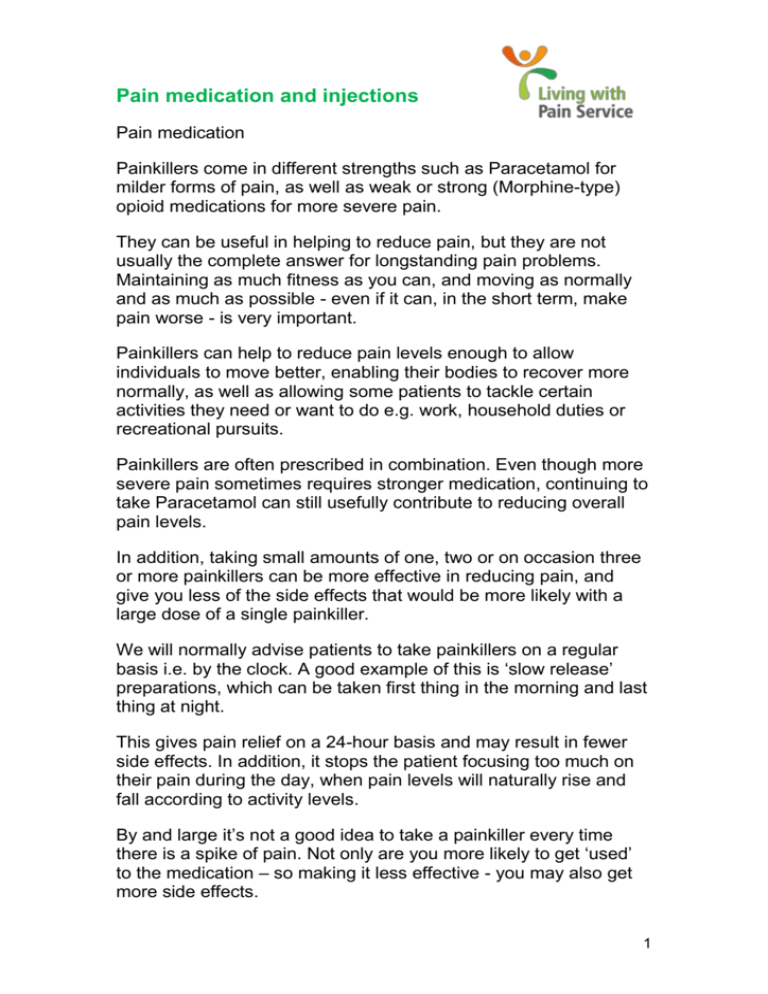
Pain medication and injections Pain medication Painkillers come in different strengths such as Paracetamol for milder forms of pain, as well as weak or strong (Morphine-type) opioid medications for more severe pain. They can be useful in helping to reduce pain, but they are not usually the complete answer for longstanding pain problems. Maintaining as much fitness as you can, and moving as normally and as much as possible - even if it can, in the short term, make pain worse - is very important. Painkillers can help to reduce pain levels enough to allow individuals to move better, enabling their bodies to recover more normally, as well as allowing some patients to tackle certain activities they need or want to do e.g. work, household duties or recreational pursuits. Painkillers are often prescribed in combination. Even though more severe pain sometimes requires stronger medication, continuing to take Paracetamol can still usefully contribute to reducing overall pain levels. In addition, taking small amounts of one, two or on occasion three or more painkillers can be more effective in reducing pain, and give you less of the side effects that would be more likely with a large dose of a single painkiller. We will normally advise patients to take painkillers on a regular basis i.e. by the clock. A good example of this is ‘slow release’ preparations, which can be taken first thing in the morning and last thing at night. This gives pain relief on a 24-hour basis and may result in fewer side effects. In addition, it stops the patient focusing too much on their pain during the day, when pain levels will naturally rise and fall according to activity levels. By and large it’s not a good idea to take a painkiller every time there is a spike of pain. Not only are you more likely to get ‘used’ to the medication – so making it less effective - you may also get more side effects. 1 Indeed, some people reasonably feel they are better off with their pain untreated, rather than with a slight reduction in their pain but with side effects due to a particular medication. Very importantly, the biological basis of pain means that it is sometimes made worse by our thoughts and feelings and lack of physical activity. Medication will not work for this aspect of pain, which requires a different approach: helping individuals cope or self manage better. Caution should be exercised in prescribing and taking strong Morphine-type medication. Hard evidence on its long-term benefit or usefulness is absent, and such medication cannot be routinely recommended for most persistent pain patients. The Pain Doctor and GP will work together to decide when these are appropriate, what medication to trial and how it should be monitored. Injections A doctor may advocate injection treatment. This will always be on an individual basis weighing up the potential benefits and risks of the procedure. While some chronic pain patients find injections reduce their pain for a period of time, allowing other treatments to work better, most injections are unlikely to be effective in the long term. A good example of where injections can be beneficial is where they can provide enough relief to allow the patient to work better with a physiotherapist – stretching and regaining better use of a part of their body. The Pain Doctor will discuss with each patient the appropriateness of injections if he/she thinks it could be useful in reducing pain and improving function and potential risks. 2



